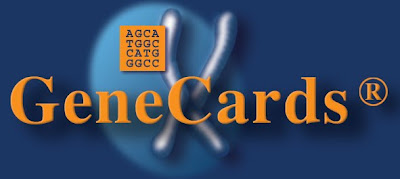This week, we’re pleased to profile the popular GeneCards database in our weekly Spotlight series. Most people will need no introduction to GeneCards, but nevertheless we thought it would be nice to get a chance to highlight their recent work and to note their BioGPS plugin. Thanks to Marilyn Safran for speaking with us.
In one tweet (140 characters) or less, introduce us to your website.
GeneCards is a searchable, integrated database of human genes, with “just the right mix” of targeted links and in-line functional data.Why is your database unique and special?
A combination of comprehensiveness and usability. GeneCards has the largest input set of source data (from over 80 manually curated and automated contributors) that we know of. It sifts, integrates, sorts, and prioritizes the information topically, in 18 sections that includes orthologies, disease relationships, mutations and SNPs, gene expression, gene function, pathways, protein-protein interactions, related drugs & compounds and direct links to valuable research reagents and tools such as antibodies, recombinant proteins, clones, expression assays and RNAi reagents.Why did you create your website?
To fill a void. At the time, in late 1996, there was no integrated gene-centric database. (NCBI’s LocusLink, now Entrez Gene, came out in about 2000). Doron Lancet was the HUGO editor for chromosome 17, and his two postdocs had curated electronic “fact sheets” for ~250 genes; the group then decided that it would be a great idea to have an automated system that produced one page (card) for each of the (then) ~5000 HGNC-approved human genes, with data mined from sources such as GDB, SWISSPROT and OMIM. This was the beginning of a long journey…Who is your target audience?
Biologists, bioinformaticians, and medical researchers in both academia and industry, students, patent/IP personnel, and, to a lesser extent, doctors and lay people.What’s your greatest success story so far?
Having your blog cite us as surpassing all others in popularity… [Ed. note: see this previous blog post for more details.]What improvements are coming in the future?
Our new Version 3 beta came out a few months ago, with vastly improved search speed and quality, and an object-relational architecture, enabling, among others, sophisticated operations on sets of genes. Version 3 will replace the current home site in 2010.Who is the team behind your website?
See http://www.genecards.org/gcPeople.html. Professor Doron Lancet of the Department of Molecular Genetics, head of the Crown Human Genome Center at the Weizmann Institute of Science, is the principal investigator. I head the development team, a diverse group (typically 8, some part time) of postdocs, students, software engineers and consultants. We also keep strong ties with many of our dozens of alumni worldwide.
We also thank Marilyn and the GeneCards team for including links to both BioGPS and the Gene Wiki on their GeneCards. Thanks!

